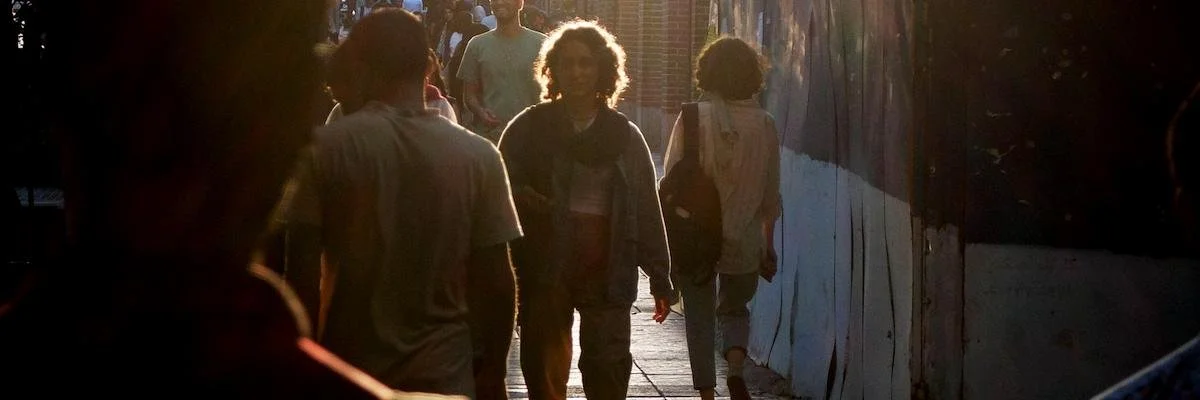In Iran, ‘Ordinary Women’ Lead an Extraordinary Movement
One year has passed since the tragic death of Mahsa (Jina) Amini in police custody, the event that ignited the Woman, Life, Freedom movement. This movement has provided a platform for acknowledging the enduring struggles of ordinary women in Iran, a battle that had been ongoing long before September 16, 2022. By “ordinary women,” I refer to individuals outside the elite and activist spectrum, adapting from sociologist Asef Bayat’s definition of “ordinary people” in his book Revolutionary Life. The struggles of ordinary women in Iran were often ignored or sidelined until last year. While I respect the efforts of all women’s rights activists dedicated to improving women’s rights in Iran, I believe the “Mahsa movement” stands on the shoulders of ordinary women, many of whom may not belong to the middle class or possess feminist knowledge, but who are undeniably fighting for the freedom to lead ordinary lives.
The Woman, Life, Freedom movement has induced cultural transformations within society and families in Iran. Many parents who previously advised their daughters to accept the mandatory hijab as a “minor issue” have now thrown their support behind their daughters’ quest for freedom of choice. The presence of women with uncovered hair has become more widely accepted. Women feel safer going out without the hijab. As one woman told me, “before the Woman, Life, Freedom movement, when I went out without hijab, I felt I was breaking social norms and that I was doing something weird in the eyes of society. But now I feel safe and know if somebody scolds me about the hijab, other people in the streets will come to protect me.’’ These cultural changes in the Iranian society are not limited to the hijab issue. The status of women within families has largely changed, and more women are gaining autonomy.
One of the most intriguing aspects of the Mahsa movement is the newfound overt support from men. Women have historically borne the brunt of struggles against a patriarchal society and state, but the Mahsa movement marks a turning point where men have joined in supporting women’s causes. Whether this support will extend to other women’s issues, such as unequal inheritance and divorce laws, remains to be seen.
The Woman, Life, Freedom movement has also significantly transformed the subjectivity of ordinary women. It has united women with shared experiences and pain, reminding them that they are not alone. While there have always been small support networks among women, this movement has elevated this solidarity to a national (and international) scale. In one instance, I saw a police officer who wanted to confiscate a vendor’s goods in the Tehran subway. Women inside the wagon rushed to save the vendor, pulling her and her goods inside. The collective struggle to reclaim public spaces has emboldened women, many of whom now proclaim, “I have become braver.”
But the Mahsa movement has not been limited to women’s rights alone. The movement initially protested against mandatory hijab but, like an umbrella, it now encompasses a range of other issues in Iran, including the unbearable economic challenges and ethnic and religious discrimination. Protesters have also been calling for the overthrow of the Islamic Republic. Yet, the state’s brutal suppression of these protests underscores the complexity of achieving political goals such as regime change. According to Jack Goldstone, a scholar of social movements, the Mahsa movement continues to lack some of the key factors needed for a full-scale revolution, such as an organised programme and the involvement of older generations.
The conflict between Iranian authorities and Iranian women dates back to the establishment of the Islamic Republic in 1979, when women’s rights were among the first to be compromised. Women did come to the streets to protest against the enactment of the compulsory hijab law and abrogation of the family protection law in March 1979—but the state prevailed in curtailing women’s rights. Four decades later, despite various policies, ideological education, and unequal laws aimed at curbing their economic, social, and political opportunities, Iranian girls and women are trying to break free from traditional gender roles.
What is undeniable today is the Iranian women’s desire for both “freedom” and an “ordinary life.” These two desires resonate strongly in my conversations with many Iranian women from around the country. Iranian women have made strides in education despite numerous obstacles. They are rising against gender-based oppression and have exhibited remarkable resilience in their quest. However, their economic participation remains disproportionately low, forcing many into the informal economy. Women are also denied the right to run for president, and the majority are disqualified to run for public office.
The Iranian state has persistently attempted to exclude women from various spheres, yet they persist in resisting. They aspire to careers as diverse as football referees, aerospace engineers, mathematicians, musicians, and much more. The evolving lifestyle of ordinary women highlights the failure of the Islamic Republic’s discourse in imposing gender roles. Their fight for the freedom to choose how they dress is just one aspect of the broader rights they seek. According to political scientist Fatemeh Sadeghi, the actions of Iranian women are not rooted in anger. Rather, they represent the transformation of anger into a force for change. Accordingly, political change, in their view, will emerge from social empowerment. These women are, in essence, revolutionaries without a revolution. They do not want to achieve freedom through revolution. They aim to achieve revolution through freedom.
Photo: Rouzbeh Fouladi




